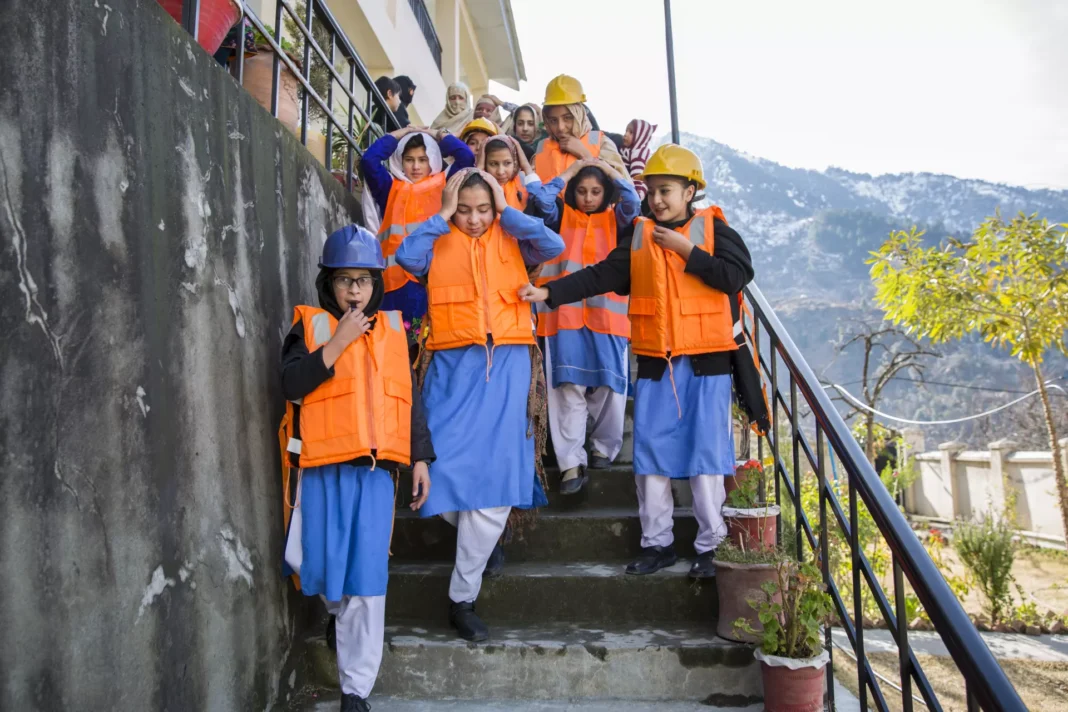Every school day starts with a bell. But what if, one day, it’s the fire alarm instead? Disasters are unpredictable, but their impact doesn’t have to be. While schools across the world teach young minds about atoms and algebra, many still neglect something far more urgent: how to survive a disaster?. In 2023, the World Bank reported that over 875 million school-aged children live in areas at high risk of natural disasters.
Yet, the majority of educational institutions fail to produce a well-equipped disaster response. This isn’t just an oversight; it is a life-threatening gap. Disaster response education and training in schools are not optional courses or programs; they are essential life skills, as critical as reading or science.
Why does Disaster Response Education Matter?
Educational institutions are among the most densely populated buildings in any community. A fire, earthquake, or violent incident can escalate within seconds. Without a clear disaster response plan and trained individuals, the consequences can be devastating. Children are especially vulnerable not only physically but also emotionally. But when trained properly, they can recognize danger, respond calmly, and even assist others. In 2021, a global study conducted by UNESCO found that schools with trained staff and students had a 30–50 percent higher rate of injury prevention during disasters.
Disaster Preparedness: More Than a Drill
Being prepared for disasters is not about ticking boxes or sounding alarms; it’s about caring for each other when life becomes unpredictable. It starts with awareness by noticing the risks around us, the cracks in a wall, the smell of gas, or the floodwater rising. It means knowing where to go, how to stay safe, and how to reach loved ones in the middle of chaos.
But it is also about people. A simple act of stopping a bleeding wound, calming a panicked friend, or remembering CPR can save a life. And sometimes, the most powerful help is just being there, steady and reassuring, when fear takes over. Preparedness and Disaster Response is not about fear; it’s about compassion, courage, and standing together when it matters most.
Training for Disaster Response: Models and Best Practices
Effective disaster preparedness training goes beyond lectures; it relies on practice and repetition. Schools often conduct regular mock drills, sometimes unannounced, to test awareness and response speed. In Japan, earthquake drills are routine, teaching children to “Drop, Cover, and Hold” while following supervised evacuation routes. Hands-on workshops with fire departments, rescue teams, and paramedics further build confidence, offering demonstrations on CPR, first aid, and fire safety.
Equally important is the training of teachers and staff. Through Training of Trainers (ToT) programs, faculty members complete certified courses that equip them to guide students in emergencies. In Pakistan, for example, the NDMA partners with the Red Crescent to train educators in evacuation protocols, first aid, and psychosocial support.

Many schools also integrate disaster awareness into the curriculum, using science, geography, and civics lessons to reinforce preparedness. Visual tools such as safety maps, posters, handbooks, and mobile alert systems help keep awareness in daily school life.
Barriers to Implementation
Supporting these practices are simple but effective tools: emergency maps and signage throughout school buildings, posters showing “what to do” in a fire or earthquake, handbooks and checklists shared with parents, stocked school emergency kits, and mobile alert systems that link directly to families and local emergency teams. These everyday reinforcements ensure that safety is not treated as an occasional exercise, but as part of the culture of learning.
Still, challenges remain. Schools often struggle with limited budgets, a lack of trained staff, or a general underestimation of risk. These barriers can be overcome with partnerships, national-level training programs, and consistent advocacy for policy integration. When disaster education is aligned with global best practices and national guidelines, it creates a framework that is both practical and sustainable.
Ultimately, investing in school safety is investing in the future. Disasters are not rare anomalies; they are part of the world we live in. The question is not if an emergency will happen, but when. And when that moment comes, will our students know what to do?
Preparedness does not require sweeping changes overnight. It can begin with a single drill, a safety committee, or a first aid certification. It can grow through open conversations with students, listening to their fears, and teaching them how to face those fears with confidence. Because when the alarms sound, it is not fear that saves lives, it is knowledge, preparation, and the courage to act.
References:
- Şükrü, E. and K. Ali, Disasters and earthquake preparedness of children and schools in Istanbul, Turkey. Geomatics, Natural Hazards and Risk, 2016. 7(4): p. 1307–1336.
- https://www.unesco.org/en/disaster-risk-reduction/school-safety.
- https://www.shakeout.org/dropcoverholdon/
- National Disaster Management Authority (NDMA), Pakistan
More from the author: In the Shadows of War— How Trauma Writes Its Legacy on the Bodies of Women and Children

Sadaf Sarfraz, currently a lecturer, holds an MPhil in Molecular Pathology and Genomics, complemented by a BSc in Medical Laboratory Technology. Contributing as a healthcare writer at Scientia-Pakistan, she passionately engages in calligraphy and art.

